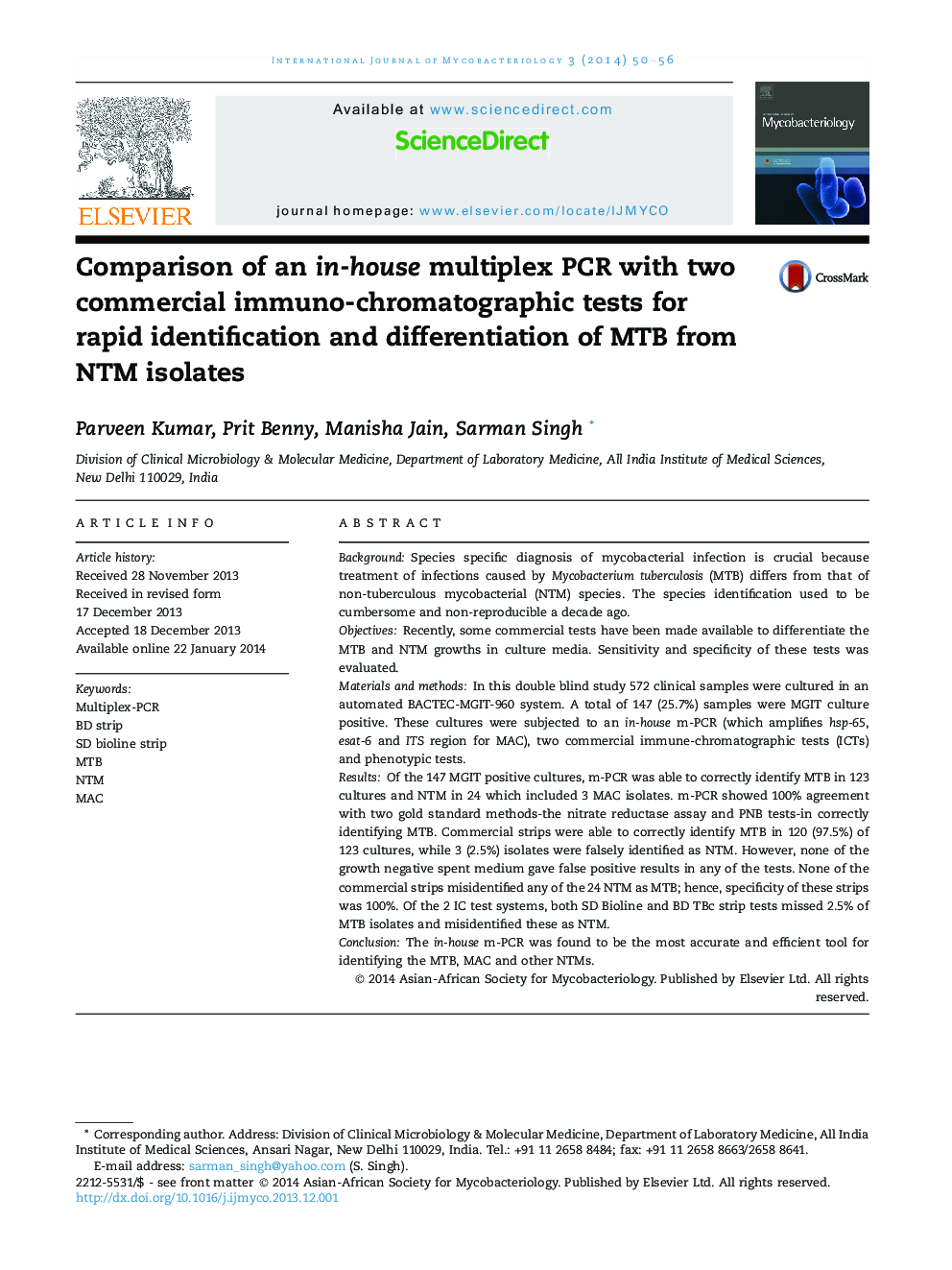| Article ID | Journal | Published Year | Pages | File Type |
|---|---|---|---|---|
| 3405253 | International Journal of Mycobacteriology | 2014 | 7 Pages |
BackgroundSpecies specific diagnosis of mycobacterial infection is crucial because treatment of infections caused by Mycobacterium tuberculosis (MTB) differs from that of non-tuberculous mycobacterial (NTM) species. The species identification used to be cumbersome and non-reproducible a decade ago.ObjectivesRecently, some commercial tests have been made available to differentiate the MTB and NTM growths in culture media. Sensitivity and specificity of these tests was evaluated.Materials and methodsIn this double blind study 572 clinical samples were cultured in an automated BACTEC-MGIT-960 system. A total of 147 (25.7%) samples were MGIT culture positive. These cultures were subjected to an in-house m-PCR (which amplifies hsp-65, esat-6 and ITS region for MAC), two commercial immune-chromatographic tests (ICTs) and phenotypic tests.ResultsOf the 147 MGIT positive cultures, m-PCR was able to correctly identify MTB in 123 cultures and NTM in 24 which included 3 MAC isolates. m-PCR showed 100% agreement with two gold standard methods-the nitrate reductase assay and PNB tests-in correctly identifying MTB. Commercial strips were able to correctly identify MTB in 120 (97.5%) of 123 cultures, while 3 (2.5%) isolates were falsely identified as NTM. However, none of the growth negative spent medium gave false positive results in any of the tests. None of the commercial strips misidentified any of the 24 NTM as MTB; hence, specificity of these strips was 100%. Of the 2 IC test systems, both SD Bioline and BD TBc strip tests missed 2.5% of MTB isolates and misidentified these as NTM.ConclusionThe in-house m-PCR was found to be the most accurate and efficient tool for identifying the MTB, MAC and other NTMs.
